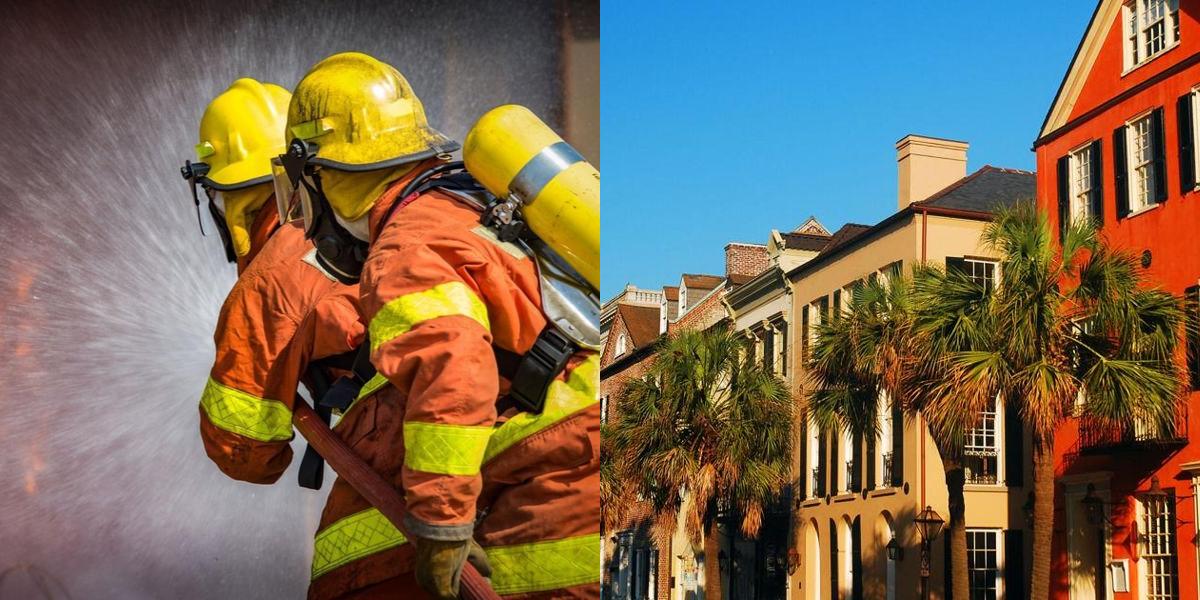How to Become a Firefighter in South Carolina

What is a Firefighter?
A firefighter is a highly trained professional who is responsible for responding to emergency situations involving fires, accidents, and other hazardous incidents. Their main role is to protect life and property by extinguishing fires, conducting rescues, and providing medical assistance.
Some of the responsibilities of a firefighter include:
- Responding to emergency calls promptly
- Operating firefighting equipment and tools
- Conducting search and rescue operations
- Administering first aid and CPR
- Educating the public about fire safety
- Inspecting and maintaining firefighting equipment and vehicles
- Participating in training exercises to enhance skills
How do I get a job as a Firefighter?
Once you have obtained your firefighter certification, the next step is to find a job as a firefighter. Here are some steps you can take to increase your chances of landing a firefighter job:
-
Research fire departments: Start by researching fire departments in your area or the area you wish to work in. Look for job postings, recruitment events, or open houses where you can learn more about the department and the hiring process. Familiarize yourself with the requirements and qualifications for firefighter jobs in those departments.
-
Prepare a resume: Create a professional resume that highlights your relevant education, training, certifications, and any previous experience or volunteer work related to firefighting or emergency services. Tailor your resume to emphasize the skills and qualifications that are most relevant to the firefighting job you are applying for.
-
Write a compelling cover letter: Along with your resume, write a compelling cover letter that explains why you are interested in the firefighting profession and why you are a good fit for the department you are applying to. Use this opportunity to showcase your passion for helping others, your commitment to public safety, and any unique qualities or experiences that set you apart from other applicants.
-
Prepare for the interview: If you are selected for an interview, it is important to prepare thoroughly. Research common interview questions for firefighter jobs and practice your responses. Be prepared to discuss your qualifications, experience, problem-solving skills, and your ability to work effectively as part of a team. Dress professionally and arrive early for the interview.
-
Stay physically fit: Physical fitness is a crucial aspect of being a firefighter, and many fire departments have specific physical fitness tests as part of their hiring process. Continue to maintain your physical fitness and be prepared to demonstrate your strength, endurance, and agility during the hiring process. Consider participating in fitness programs or training sessions specifically designed for firefighters.
-
Network and gain experience: Networking can be a valuable tool in finding firefighter job opportunities. Attend career fairs, join professional organizations, and connect with current firefighters or fire department officials in your area. Volunteering or working part-time in related roles, such as an emergency medical technician (EMT) or a firefighter reserve, can also provide valuable experience and increase your chances of getting hired as a full-time firefighter.
-
Be persistent and patient: Getting a job as a firefighter can be competitive, and it may take time to find the right opportunity. Be persistent in your job search, apply to multiple departments, and follow up on your applications. It is important to stay positive, patient, and motivated throughout the process.
Career Paths and Opportunities after Becoming a Firefighter
Becoming a firefighter opens up a variety of career paths and opportunities within the firefighting profession. Here are some potential career paths and opportunities you can explore after becoming a firefighter:
-
Specialized firefighting roles: Once you have gained experience as a firefighter, you may have the opportunity to specialize in a specific area of firefighting. This can include roles such as a hazardous materials (HAZMAT) specialist, technical rescue specialist, wildland firefighter, or fire investigator. Specializing in a specific area can allow you to develop expertise and contribute to specialized firefighting operations.
-
Promotion to leadership positions: As you gain experience and demonstrate leadership skills, you may have the opportunity to advance to leadership positions within the fire department. This can include roles such as a fire captain, battalion chief, or even a fire chief. Leadership positions involve overseeing firefighting operations, managing personnel, and making strategic decisions to ensure the safety and efficiency of the department.
-
Emergency management and planning: Firefighters often work closely with other emergency response agencies during major incidents or disasters. This exposure to emergency management can open up opportunities to work in emergency management agencies or organizations. In these roles, you would be responsible for planning, coordinating, and responding to emergencies at a broader level, including natural disasters, terrorist attacks, or public health emergencies.
-
Training and education: With your experience and expertise as a firefighter, you may choose to transition into a role as a fire academy instructor, training officer, or fire science educator. In these positions, you would be responsible for training and educating future firefighters on firefighting techniques, safety procedures, and emergency response protocols.
-
Public safety and emergency services: The skills and knowledge gained as a firefighter can also be applied to other public safety and emergency services careers. This can include roles in law enforcement, emergency medical services (EMS), or emergency dispatch. These careers allow you to continue serving and protecting the community in different capacities.
-
Community outreach and education: Firefighters often play an important role in community outreach and education. This can involve conducting fire safety presentations at schools, participating in community events, or providing fire prevention tips to the public. Some firefighters choose to focus their careers on community outreach and education, working as fire safety educators or public information officers.
How Much does a Firefighter Make?
The salary of a firefighter can vary based on factors such as location, experience, and the size of the fire department. According to the Bureau of Labor Statistics, the median annual wage for firefighters was $50,850 in May 2020. The lowest 10 percent earned less than $25,850, while the highest 10 percent earned more than $94,720.
For entry-level firefighters, the starting salary can be lower than the median wage. However, as they gain experience and move up the ranks, their salary can increase significantly. It's important to note that these figures are just averages, and the actual salary can vary depending on various factors.
Final Thoughts
Becoming a firefighter and obtaining your firefighter certification is a rewarding and challenging journey. It requires dedication, hard work, and a genuine desire to serve and protect others. By following the steps outlined in this guide, you can set yourself on the path to a fulfilling career in firefighting. Remember to stay committed to your physical fitness, continuously update your skills and knowledge, and network with others in the profession. With determination and perseverance, you can achieve your goal of becoming a firefighter and making a positive impact in your community.
Thinking about a potential career transition? Dreambound offers detailed guides to help you with making an informed decision. Dive in below:

Justine Tacmo is part of the Growth team at Dreambound. He assists the organization by updating critical information so students receive the most up-to-date information for their desired trade schools. Besides, he has a passion for writing and expresses it through poetry, covering themes of life, love, and mental health, which is also his advocacy.



